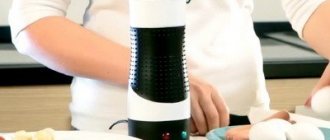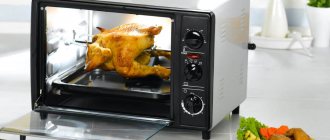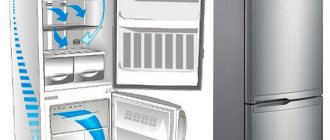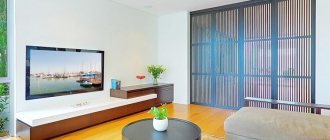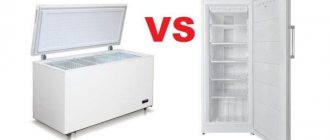What is this device?
Modern devices whose task is to purify the air reliably remove most of the unsafe substances and impurities, effectively preventing irritation to the bronchi and lungs of a person. Intensive purification of the air circulating in the living space allows you to create the cleanest and freshest microclimate possible.
Most models have an ionizing and moisturizing effect, destroy pathogenic microflora, and trap mold microspores. In the inner part of the air purifier body there are plates whose task is to effectively attract possible allergens and harmful impurities. Special filter devices are capable of trapping even the smallest harmful components, such as fine dust.
Many air purifiers for allergy sufferers are equipped with additional devices, such as ozonizers, photocatalysts, ion lamps, humidifiers, and air washers.
What is the mechanism of operation of these devices?
- The air purifier sucks in the air flow.
- The filters, ozonizers and other elements built into it perform their task by removing harmful substances from the air.
- The purified air goes outside, the degree of its purity is estimated at an average of 80–99%.
- If the device has additional functionality, such as moisturizing, cleaning from pathogenic bacteria and others, then the result will be more complete.
Types of air purifiers
Nowadays, buying an air purifier is not a problem; you can go to any thematic forum or visit a doctor and get appropriate recommendations. The main thing is to choose among the many provided models the one that tops the rating of effective for allergy sufferers and asthmatics. Let's look at the different types of devices in the table.
| Types of Air Purifiers | How they work |
| Purifiers with air wash | In this device, the aquatic environment is responsible for purifying the air flow. The internal structure of the purifier has a drum with special plates, thanks to which harmful impurities and particles are attracted and passed through the water. The device also works as an air humidifier. |
| Cleaners with neera filter | Devices with nera filters are considered the best choice for allergy sufferers and asthmatics. Such devices purify the air of allergens by 99%. An additional advantage is their ease of operation, as evidenced by numerous reviews from people running the thematic forum. |
| Electrostatic air filter | Air purification in this case is carried out using an electrostatic mechanism. Allergens and other harmful substances are attracted and retained in the filter due to electrical discharges. Such devices are not recommended for allergy sufferers, since their results are not very impressive - the degree of air purification barely reaches 80%. |
| Cleanser with moisturizing effect | Humidifying air purifiers perform two main tasks - they maintain optimal humidity in the surrounding atmosphere and clean it, and the result of such cleaning is quite acceptable - at least 90%. |
| Cleaner with ionizing effect | During operation, a large number of negative ionic particles are created in such a device, the task of which is to destroy all allergens and other unsafe components present in the incoming air flow. This device is recommended for people with insufficient immune protection and allergy sufferers. |
| Purifiers with photocatalysts | These devices not only clean the air entering them, but also disinfect it as much as possible, making it look like crystal. This occurs as a result of the interaction of the photocatalyst and ultraviolet light. With their help, harmful substances for the human body are destroyed. |
| Purifiers with ozonizers | The principle of their operation is based on ozone synthesis. The best devices to combat pathogens and toxins. |
Criteria for choosing air purifiers
The purifier not only frees the air from dirt and dust, but can also eliminate unpleasant odors, animal hair, increase humidity and ionize the air. This makes life much easier for asthmatics.
There are models of purifiers that need to be filled with water, and after use the blades must be washed and dried; there are purifiers that do not require water for cleaning and work using UV lamps.
First of all, you need to determine whether the purifier will work constantly or will be turned on from time to time.
For asthmatics, it is better to choose less energy-intensive purifiers, as they will work continuously. Also, before purchasing a device, you need to decide on the scope of cleaning.
The passport of each cleaner indicates the maximum volume that the cleaner can effectively handle. Ideally, the purifier should pass through the entire volume of air in the room at least 2 times per hour. This ensures the most effective cleaning of the house and excellent well-being for asthmatics, allergy sufferers and all household members.
If you plan to install air purifiers in each room, then when selecting you need to compare the area of the room with the parameters specified in the technical specifications.
Article on the topic: Allergies in a child: symptoms, treatment, types on the skin
If you plan to buy one device for the entire apartment, then you should take the most powerful cleaner. The volume of the purifier indicated in the technical specifications should not be less than the volume of the largest room. Smaller rooms will require less time to completely clean.
When you plan to use the purifier not constantly, for example for seasonal allergy sufferers, but only sometimes, it is better to give preference to models that do not need to be filled with water. These models are usually used by allergy sufferers.
Reference! It is necessary to drain the water from devices that use water for cleaning before a long break in operation. Otherwise, it will acquire an unpleasant odor and lose its cleaning functions.
It is also worth paying attention to whether the kit includes replacement filters, consumables, their cost and recommended replacement frequency. If you don’t have replacement filters, decide how much money you will need to periodically allocate for their purchase. Get your doctor's recommendations for the purifier model.
Air purifier inside view
Table of criteria for choosing air purifiers for allergy sufferers and asthmatics
| type of cleaner | pros | minuses |
| purifier with HEPA filter | The highest quality air purification is ideal for asthmatics | requires filter changes |
| cleaner washing | excellent cleaning quality, air humidification suitable for allergy sufferers and asthmatics | noise during operation, water needs to be changed |
| Ozonizers | eliminates toxins, suitable for allergy sufferers | Air purification is carried out only in an empty room |
| Carbon cleaners | perfectly eliminates unpleasant odors | Doesn't eliminate toxins and bacteria Not too good for allergy sufferers |
| Photocatalysts | perfectly removes toxins, bacteria, allergens, irreplaceable for both allergy sufferers and asthmatics | noisy, big |
| Ionizers | do not require changing filters | need to do wet cleaning |
| Electrostatic cleaners | — | require changing filters, poor cleaning quality, not suitable for allergy sufferers |
Which air purifier is better to buy?
The range of affordable air purifiers is represented by devices made in China and Russia. Their durability and efficiency can be questioned, and their external design is hardly attractive.
Today, devices from manufacturers in Korea, Japan and Italy under the brands Panasonic, Philips, Sharp and AIC are recognized as higher quality air purifiers. If it is possible not to save the family budget on health, then you can pay attention to the Daikin and Euromate brands, which can offer the best deals on the modern market.
How to choose a humidifier?
When choosing a humidifier model for allergy sufferers and asthmatics, you should pay attention to the following technical characteristics:
- Tank capacity and evaporation rate: these parameters determine how long the device operates without refueling. For example, if a humidifier consumes 400 ml per hour and is equipped with a 3 liter capacity, it will work for no more than 8 hours without adding water.
- Volume of the room served: the instructions for the device indicate the area of the room it is designed for. However, here you need to make an adjustment for the height of the ceilings, since the device is designed for the volume of the room. If the ceiling height is much higher than average, you need to buy a device designed for a larger area.
- Noise level is a key criterion if the humidifier will be used at night. It is necessary to pay attention not only to the noise level when the mechanisms are operating, but also to the gurgling and operation of warning signals (especially if they are repeated).
- The built-in hygrometer is a controversial option, since it only measures humidity near the humidifier itself. It would be much more useful to purchase a separate humidity meter and install it near your bed.
- The choice of control type - mechanical, from a remote control, from a smartphone, depends only on the planned purchase budget.
- Ergonomics - how convenient it is to fill the tank with water, the ability to adjust the direction of steam: all this will make using the device easier.
- Consumables: how many replaceable filters are installed, how often they need to be replaced.
- Water requirements: while some devices can be refilled with tap water, complex models may even require distilled water.
- Air ionization is a necessary option for allergy sufferers.
Choosing the design of the device for allergy sufferers is only a matter of budget.
Excessive air humidity is just as harmful for this category of users as dryness. Therefore, any device that guarantees an increase in humidity to 50% will be useful for them.
Pros and cons of air purifiers
Allergy specialists, pulmonologists and people suffering from allergic diseases were able to appreciate the air purifiers, noting the difference in improving the quality of life before purchasing the device and after starting to use it. If you choose an air purifier for allergy sufferers wisely, based on the characteristics of the device recommended by experts, you can significantly improve your own well-being and overall health in case of an allergic disease. Evidence of this is provided by the reviews that fill any relevant forum on the Internet.
Here are 10 benefits of air purifiers for allergy sufferers:
- Neutralization of harmful substances contained in the air.
- Creating a fresh and clean indoor climate.
- Destruction of mold microspores, viruses and bacteria, chemicals, toxins, tobacco smoke, rotten smell.
- Removing allergens of any size from the atmosphere, such as microscopic dust mites.
- Fight against dust mite waste products on household items.
- Intensive air humidification, if this option is present in the selected model.
- Alleviating the clinical manifestations of cough, reducing the frequency and severity of asthma attacks.
- The device does not contain toxic components and does not irritate the lungs and bronchi of an allergic person.
- The device perfectly purifies the air; the result of this work is estimated by experts to be 80–99%.
- There is a sufficient range of models offered, equipped with various options that allow you to choose an air purifier to suit every taste and budget.
Among the disadvantages of these devices, only one unpleasant point can be highlighted - the cost. You can buy an air purifier in Moscow from 5 to 25 thousand rubles, depending on the chosen model.
Air purifier for allergy sufferers: how to choose the best one?
You should not thoughtlessly buy an air purifier: the models presented in stores vary greatly, but in order for the purifier to serve people with allergies well, it must have the appropriate parameters.
The most important of them is a filtration system, an element of which must be a HEPA filter that filters small inhalation allergens, such as dust mites, pollen, and animal epidermis. In addition, an air purifier for allergy sufferers should have a carbon filter that absorbs gases and volatile organic compounds, such as those found in cleaning products or cosmetics, which can also cause allergies. Having familiarized yourself with the filters that this model is equipped with, you should immediately check how long they last (some need to be changed even every three months) and how much they cost.
The purifier should also have an air quality indicator and a pollution sensor. The first informs about the state of air in the room, the second automatically starts the device (or increases its power) when the level of pollution increases above the norm. Adequate cleaning efficiency, as measured by CADR, is another important parameter. CADR tells you how much air a given air purifier model will clean in an hour. Many manufacturers, in addition to information about the CADR indicator, also indicate the maximum area of the room in which a given model of purifier should be placed.
Contraindications
Since in allergic diseases the human bronchopulmonary system is in a constant irritated state, it is important to take into account any nuances. Only with the right approach can you benefit from air purifiers. These devices should be used with extreme caution by persons suffering from the following diseases or conditions:
- arterial hypertension;
- frequently recurring viral colds, weak immune defense;
- hypersensitivity to any minimal exposure to irritants.
For all of the above conditions, it is necessary to combine the use of air purifiers with the necessary medications.
How to choose an air purifier?
Allergies are always provoked by external negative factors, and, as a rule, the potential pathogen is pet hair, pollen, mold microspores, dust and a number of pathogenic microscopic organisms (for example, dust mites, etc.). Of course, to treat the disease and relieve the clinical manifestations of an acute allergic reaction, you can use antihistamines, but you don’t want to expose your body to medications every time. That is why such a device as an air purifier for asthmatics and allergy sufferers was created.
However, allergic diseases differ from each other, since their development is provoked by various types of allergens listed above. That is, for each individual case you need to choose your own air purifier, which will be configured in advance to combat specific irritants. What does this look like in practice?
AIR CLEANER FOR ALLERGIES TO ANIMAL DAIR. For example, a person suffers from hypersensitivity to particles of pet fur. In this case, an ordinary mesh made of polymers and steel wire is suitable as a filtering device, thanks to which it is possible to retain allergic particles from the air flow up to 10 micrometers in size. But, at the same time, it is important to take into account that when dry, animal hair has a relatively low weight, so in this case it is recommended to choose filters in conjunction with a moisturizing option, since wetted wool will be heavier than dry hair.
As a result, the following types of filters can be considered the optimal options for air purifiers for collecting wool from the air mass:
- cleaners with a humidifier, which drive an air mass through a special housing, where two wet drums rotate, collecting and retaining wool particles;
- purifiers with electrostatic air filtration methods, which are capable of selectively catching “magnetized” wool particles from the incoming stream due to the operation of electromagnetic fields.
AIR PURIFIER FOR POLLEN ALLERGY. If plant pollen is the culprit of the allergic disease, then the existing problem can be solved by using all-season cleaning complexes, with built-in additional options that can be used exclusively during the flowering period of potential allergens. A similar solution would be to use them continuously if the patient is allergic to fine dust or animal dander.
Thus, the use of the following filtration systems can provide an anti-allergenic effect and cope with the task:
- An air washing system is a cabinet-based cleaning system that includes several wet drums, the operating principle of which is based on catching small particles of pollen or other harmful impurities through the exhaust hole, followed by wetting and collecting them on the surface of the filter device. Such devices do not require serious operating skills, they are easy to clean, and their cost cannot be called prohibitive.
- Filters with an electrostatic principle of operation, which we have already discussed above. They, like electromagnetic traps, collect and ionize various harmful components, the size of which is at least 0.01 micrometers. It turns out that larger particles, the size of which varies in the range of 0.3–10 micrometers, “stick” to the filter parts of this device even more effectively than to the wet part of the sink.
- Filters for the active collection and retention of microscopic particles or nera filters, which essentially consist of sheets with many holes of various calibers - 0.3–6.5 microns. But they can be called disposable devices, since they will last no more than 12 months, and then they will need to be replaced with new, clean devices. For this reason, these air purifiers are recommended for use in case of seasonal types of allergic diseases, for example, hay fever or allergic rhinitis, which can be used exclusively during the flowering process of plants.
AIR CLEANER FOR DUST MITE ALLERGY. Allergies to dust mites and other microorganisms also require air filtration, but in this case, the methods for purifying the air mass must be completely different, since we are talking about living microscopic organisms. That is, the task of filtration is not only to collect and retain microorganisms inside the system, but also to completely destroy them. Otherwise, mites will continue to exist in the filtering device itself, and will continue to pollute the surrounding air of the apartment with the products of their vital activity.
In this case, allergy sufferers and asthmatics are advised to pay attention to filters of models with an additional ultraviolet effect or devices with an electrostatic mechanism of action. Thanks to the emitter, all microorganisms will die after entering the filter device along with the air flow.
Also, good results can be obtained by a device with an ozonizer, which is a generating device of triatomic oxygen - a rather serious oxidizing agent and can have a detrimental effect not only on microscopic mites, but also on microspores of mold fungi.
How to choose an air purifier for your home
Which air purifier is best to buy for allergies? What should you consider when choosing such a device?
Most often, allergy sufferers suffer from dust and pollen. In this regard, an air purifier with a HEPA/F5/F7/F9 filter would be a win-win option: the cleaning efficiency of these pollutants is 100%.
Why is supply ventilation with a filter the best solution for allergy sufferers?
Proven effectiveness. Supply ventilation with a filter solves the main “allergic” problem - how to ensure the supply of fresh air without allergens and at the same time keep the windows closed.
Why are indoor cleaners useless for allergy sufferers? The fact is that the stuffiness in the room will sooner or later force you to open the windows for ventilation. You can purify the “internal” air as much as you like - there will be no point in this, since with each new ventilation the apartment will again be filled with allergens from the street. It's as pointless as carrying water in a leaky bucket.
“Inflow” with filters solves the problem radically: the windows are always closed, the house is fresh, allergens are not allowed access.
The effect of “self-purification” of the atmosphere in the house. When the ventilator operates, a constant flow of air is created, which is directed from the device towards the hood. In this case, internal pollutants (dust, skin particles) leave the room along with the air flow.
Budget savings. Have you ever considered the toll allergies take on your budget? These are the costs of a course of antihistamines (on average from 1000 to 5000 rubles), consultations with an allergist (2000-4000 rubles per appointment). In this case, expenses will most likely be repeated from year to year.
You spend this money to control allergies and improve your quality of life. Installing a ventilator with a filter will give the same effect! Considering these savings, the cost of it will pay off in 3-4 months. Then the device will start working “plus”.
Spend money on yourself, not on fighting allergies!
What else should you consider when choosing an air purifier?
Before you purchase a filter to clean your home microclimate, you must consult with an allergist. If it is not possible to visit a doctor in person, you can go to the appropriate medical forum. A specialist will suggest the most optimal filter device that will help in a particular case. The patient’s main task is to tell in detail about the peculiarities of the situation in the living room, and also to report the presence of pets in it.
Let's consider in the table the factors that may be important when purchasing an air purifier.
| Factors | Their relevance |
| Living area | The living area, for example, a room where a patient with an allergic or asthmatic status lives, must be suitable for the functionality of the cleaning device. Each device is designed for a specific area; the best option would be to purchase a device to clean a larger area, thus the quality of cleaning will be higher. |
| Insufficient humidity level in the room | Dry air in a living space requires the purchase of an air purifier with washing and humidifier options. |
| Health status | If a person has a weak immune system, there are signs of increased fatigue, frequent colds, problems with the nervous system, you need to choose a purifier with an ozonation option or an ionizer. A maximally clean and fresh atmosphere in the house improves the patient’s resistance and well-being. |
| Frequency of device use | If you plan to use the air purifier on an ongoing basis, then you can opt for any model. If the device will be used intermittently, for example, with a seasonal form of the disease, then it is better not to choose devices with a humidification effect and air washing, since the aqueous environment stagnates inside them, which adversely affects the operation of the air purifier. |
| Severe bronchial asthma | Frequent asthmatic attacks and advanced forms of the disease require a more careful approach; the best solution in this case would be devices with non-carbon dioxide filters. This unique purification system frees the air from 99% of all pathogenic substances. |
Reviews on the use of air purifiers
DMITRY, 32 years old. I was looking for an air purifier for a long time, the purchase was stopped by the choice between the quality and price of the device. As a result, I purchased an AICXJ-3800A1 purifier-ionizer with nera and carbon filters at a price of 17,500 rubles. The whole family is happy with the result, even those who do not suffer from allergies noticed that the air quality in the house has improved, it is easier to breathe, and very little electricity is wasted.
SVETLANA, 53 years old. Not all healthy people will understand the need to purchase this device, because the cost cannot be called cheap. But if you are allergic to wool, dust and pollen, you can evaluate the effectiveness of these devices already in the first days of use. The Redmond RAC 3704 air purifier with non-polluting filters turned out to be exactly the lifeline I was missing. The cost of the device is 21,300 rubles, which is quite acceptable compared to its characteristics. A forum with “friends in misfortune” like me helped me choose a device.
An air purifier is a modern device that can make life easier for allergy sufferers and asthmatics. If you purchase it with optimal functional characteristics, the result from use will be positive.
Types of Air Purifiers
Purifiers with HEPA filters
One of the best cleaners for asthmatics and allergy sufferers. They have the highest percentage of air purification from dust and allergens. The purifier is created in such a way that even the smallest particles remain inside the filter.
It becomes a kind of barrier on which allergens remain, the outlet air is purified by 90-95%. Does not require frequent cleaning; replacing the filter 2 times a year is enough. An indispensable model for allergy sufferers and asthmatics.
Purifiers with HEPA filters
Electrostatic air purifiers
Due to static electricity, microparticles are attracted to the electrified plates and remain on them. Not the best type of cleaner for allergy sufferers and asthmatics; it does not have anti-allergenic qualities. The quality of air purification is no more than 80%. In addition, the plates require frequent cleaning.
Electrostatic filter
Air washers
Great cleaners with great reviews. By sucking in air, the purifier drives it through microparticles of water. This procedure allows you to “wash” all unnecessary impurities from the air, while simultaneously moisturizing.
That's why it's called a sink. The washing test demonstrates air purification quality of at least 90%. Does not require the purchase of additional consumables.
The disadvantages include the size of the purifier and noisy operation. Requires frequent changes or replenishment of water. It is best if purifiers of this type also combine an ionization function. An excellent choice for allergy sufferers.
Air washing
Ozonizers
The operating principle of such purifiers is based on the synthesis of ozone, which destroys microbes and removes all toxic substances from the air. It’s not very encouraging that air purification should be carried out in an empty room without residents.
Although this may be a reason for regular walks with the whole family. An excellent choice for allergy sufferers.
Ozonizer
Purifiers with carbon filter
They allow you to completely clean the air from the smell of tobacco, food and other unpleasant odors, providing a crystal clear air flow. Not very good for allergy sufferers and asthmatics, since eliminating odors does not in any way affect allergens and harmful bacteria contained in the air.
Carbon filter
Purifiers with photocatalysts
Their action is based on the combined effect of a photocatalyst and an ultraviolet lamp. As a result of the operation of the device, the air becomes not just clean, but practically sterile.
Similar devices are used to disinfect operating rooms. Do not require frequent changes of consumables. Suitable for both allergy sufferers and asthmatics. The ultraviolet lamp works for at least 3 years. They are too bulky and make a lot of noise when working.
Photocatalyst cleaner
Remote ionizers
Creates negatively charged ions that literally cause all the dirt and allergens to settle. After this, it is enough to carry out wet cleaning and enjoy the purity of the air. Since dirt does not get inside the device, it does not require cleaning. They make life much easier for asthmatics.
Remote ionizer
In addition, there are mixed types of air purifiers. They combine several filters and provide multi-stage cleaning. For asthmatics and allergy sufferers, it is better to choose mixed models.
Air purifier prices.
| type of cleaner | price |
| Air washing | from 15,000 rub. |
| HEPA filters | from 40,000 rub. |
| Carbon filters | from 20,000 rub. |
| Ionizers | from 15,000 rub. |
| Ozonizers | from 10,000 rub. |
| Photocatalysts | from 20,000 rub. |
| Electrostatic | from 10,000 rub. |


